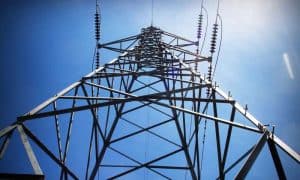
One year after winter storms crippled Texas’s electricity grid, contributing to more than 200 deaths, a Cornell University-led analysis recommends contracting improvements to reduce decentralized energy markets’ vulnerability to rare events.
Such “energy-only” markets rely on investors to anticipate demand for all conditions and build appropriate resiliency into the system. They allow prices to soar during extreme events to incentivize preparedness.
But in Texas, where Winter Storm Uri caused catastrophic blackouts over five consecutive days of frigid temperatures, the crisis revealed the market’s failure to manage risk as designed, says Jacob Mays, assistant professor in the School of Civil and Environmental Engineering at Cornell. Winterization investment fell short, he said, because the payoff proved too distant and uncertain.
“You’re counting on investors basically buying lottery tickets, where they build resources in hopes that once every 20 or 30 years they’ll get a huge payday,” Mays said. “That’s just too risky for most investors in these long-term infrastructure assets. They want a more stable revenue stream.”
Mays is the lead author of “Private Risk and Social Resilience in Liberalized Electricity Markets,” published in the journal Joule.
Using Texas as a case study, the scholars argue that decentralized energy markets are prone to underinvestment in resiliency against rare events. They say real-world gaps in risk trading undermine the markets’ idealized assumption of what economists call complete markets in risk.
To address that vulnerability, the researchers say the Electric Reliability Council of Texas (ERCOT) and similar systems must do a better job of translating high spot prices into stable, long-term contracts with more certain returns on investment. Their proposed fix: Mandatory contracting to require advanced energy purchases.
In the United States, though not globally, Texas is unique in its implementation of an energy-only market. Most U.S. systems have a “capacity” requirement, in which a system operator determines the level of resources needed and electricity buyers share in the cost of achieving it.
Across both strategies, Mays is investigating how to ensure that systems guarantee adequate resources in ways that support—rather than hinder—decarbonization efforts.
In Texas, Mays said one proposed reform, called the Load-Serving Entity Reliability Obligation, contains elements of what the research team believes is missing. But much of the reform discussion has focused on what they consider distractions from the core issue.
Some commentators have suggested spot prices—set every five minutes based on real-time grid conditions—weren’t allowed to rise high enough to incentivize adequate investment in winterization. Mays said that argument doesn’t explain why the system failed to meet its own reliability target, or what actually happened to prices.
Others have blamed the system operator, ERCOT, for not anticipating the possibility of such severe weather. But Mays said that’s unfair in a system designed to limit central planning in favor of the entire market’s aggregated knowledge, which could have foreseen conditions that were extreme but not unprecedented.
Given the decentralized nature of ERCOT’s decision-making, the authors wrote, “this failure is shared by all involved.”
